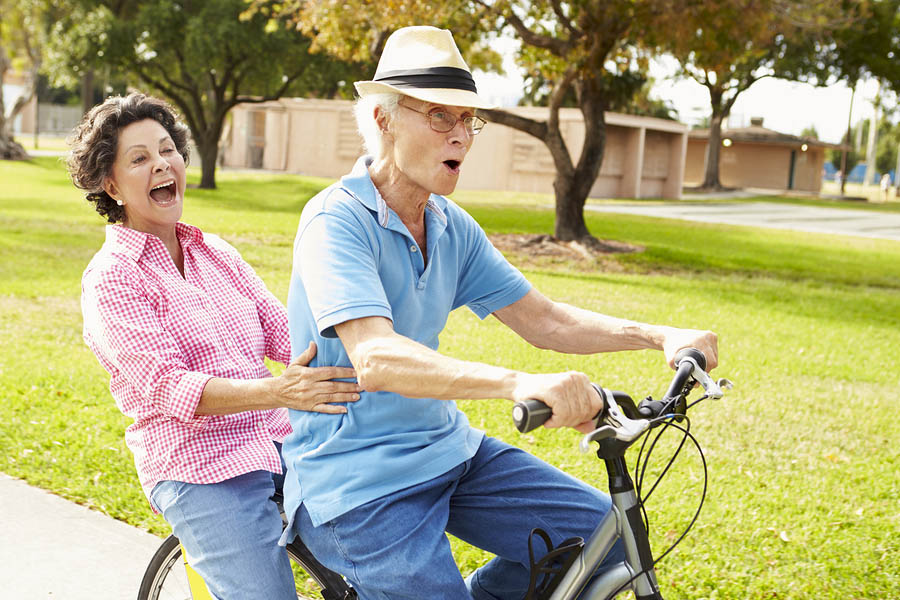Bicycle Training for Seniors: Cycling for Older Adults
Category:

As we get older, regular exercise only becomes more difficult. Losses in flexibility, muscle mass, and bone density mean seniors find themselves at greater risk for a variety of exercise-related injuries. But stationary bike exercises for seniors can often serve as a stunningly simply solution to the problem.
Why Cycling for Seniors?
Cycling is adaptable. It allows people with different levels of fitness to immediately find a challenge that’s appropriate for their current abilities. Cycling can frequently address the kind of physical limitations and mobility concerns associated with seniors finding the right exercise.
For example, senior cyclists may use recumbent bikes, a design which extends your legs in front of you. This can help support the lower back and pelvis while simultaneously reducing the load placed on your knees and hips. Many bikes are made with built-in heart monitors, which can be quite useful for maintaining a watchful eye on exertion.
Most people know that jogging is a good way to stay active, but high-impact exercises like jogging can be stressful to aged joints. Cycling is a low-impact exercise with minimal impact on the knees.
And even though it’s a low-impact exercise, it has the same effects associated with activities like running. For instance, cycling has been shown to reduce the rate at which people experience the muscle loss associated with age.
Cycling for Senior Brains
Apart from physical fitness, staying active has enormous benefits for the brain. You may already know that people with dementia or Alzheimer’s will experience a loss of gray matter in their brain. Natural aging reduces how much gray matter we have as well, especially in areas associated with memory and executive function.
But similar to how regular exercise can slow down physical aging, it can do the same for the brain. Regular exercise has been shown to dramatically increase blood flow to the brain for the elderly. Just 30 minutes of cycling on a regular basis has been shown to have significant cognitive benefits, especially for memory and learning.
Cycling with Care
As we get older, our maximum heart rate decreases, and our risk of injury increases. Bicycling training for seniors can be especially important due to their risk of injury. Like almost all other exercises, form matters.
Knees should remain stable and centered while pedaling. If kneecaps roll inwards or outwards, it may impact cartilage, especially among seniors with inflammation. Likewise, being close to the handlebars impacts the angle of your knees. Sitting back further can help.
Staying Safe
Many people enjoy stationary cycling because it gives them a chance to get lost watching television while they exercise. The low cost and high availability of exercise bikes also makes cycling a uniquely attractive option for many seniors.
But for people who don’t fall in love with their bike, there are always alternatives. Swimming, yoga, rowing, and even walking can all be effective low-impact exercises. For anyone who wants the health benefits of exercise, staying active is really what matters most.
Subscribe
Date: 2019-01-15
Category:


